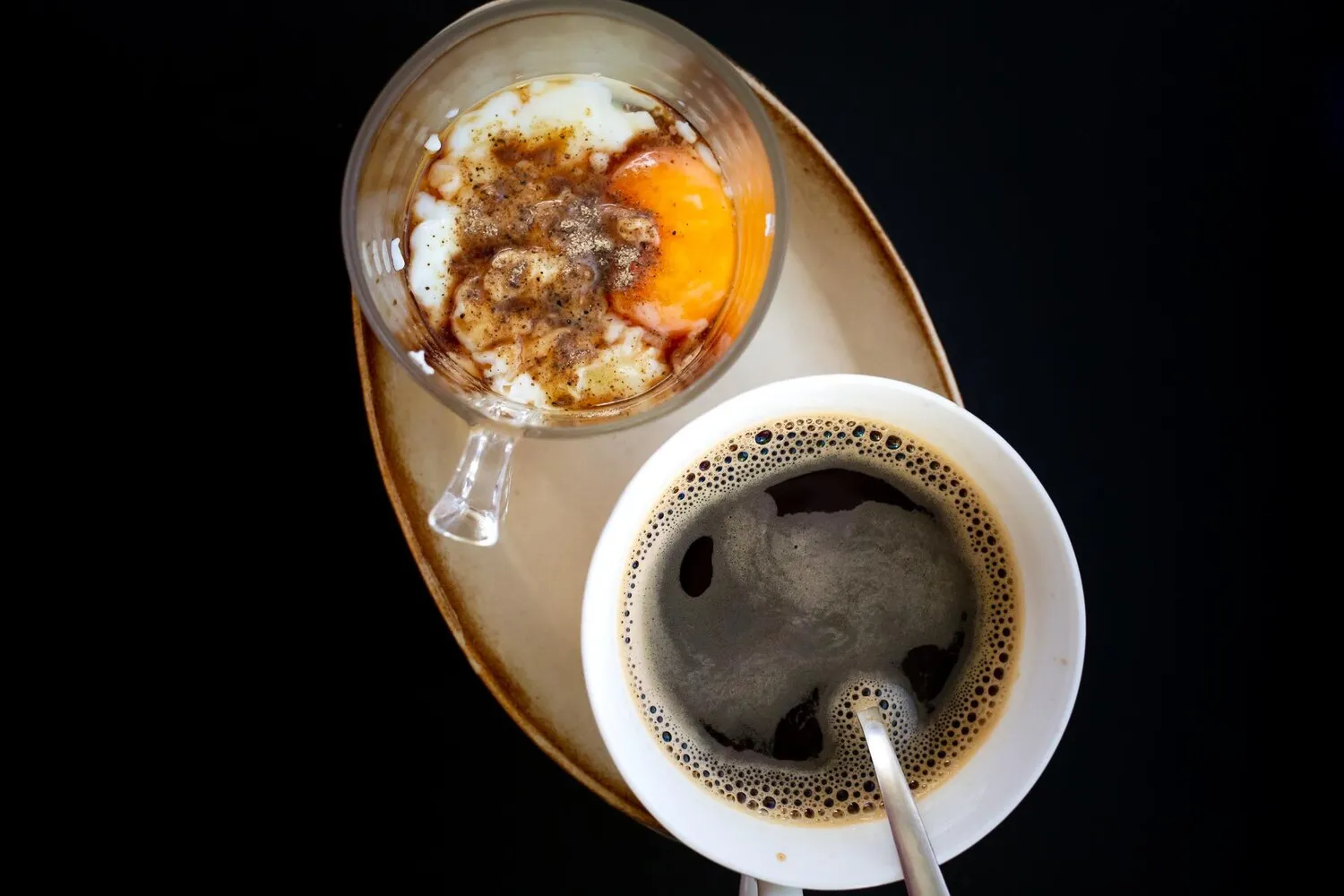
Espresso
A concentrated coffee beverage brewed by forcing hot water through finely-ground coffee beans.
Nutrition Facts
* The % Daily Value (DV) tells you how much a nutrient in a serving of food contributes to a daily diet. 2,000 calories a day is used for general nutrition advice.
Espresso's roots lie in the late 19th century Turin, Italy, driven by a desire for faster coffee preparation in bustling cafes. Angelo Moriondo patented an early 'instant' coffee machine, but it was Luigi Bezzera who truly innovated with a machine that forced pressurized hot water through coffee, leading to the espresso we know today. Further refinements by Desiderio Pavoni made the process more reliable and aesthetically pleasing. Espresso's development was intertwined with Italy's burgeoning cafe culture and the need for efficient service.
Espresso is deeply ingrained in Italian culture and has become a global phenomenon, symbolizing a moment of relaxation, social connection, and appreciation for craftsmanship.
Italian Coffee Culture
In Italy, espresso is more than just a drink; it's a daily ritual. It's typically consumed quickly at the bar, often standing, and is an integral part of social interactions.
Espresso-Based Drinks
Espresso forms the foundation for a wide range of coffee beverages, including cappuccino, latte, macchiato, and Americano, each offering a unique flavor profile and cultural association.
Global Adaptation
Espresso's popularity has spread worldwide, leading to regional variations and adaptations in brewing techniques, bean selection, and serving styles.
Espresso boasts an intense and complex flavor profile, characterized by its concentrated nature and rich aroma.
The primary flavor is a robust bitterness, often accompanied by notes of chocolate, caramel, and roasted nuts. Depending on the bean origin and roasting level, espresso can also exhibit fruity, floral, or spicy undertones. The crema, a foamy layer on top, adds a velvety texture and contributes to the overall flavor perception. High-quality espresso is characterized by a balance of these flavors, avoiding excessive bitterness or sourness.
Grind Size
The grind size is crucial for proper extraction. It should be fine enough to create resistance but not so fine that it chokes the machine. Experimentation is key to finding the optimal grind for your equipment and beans.
Tamping
Consistent and even tamping is essential for creating a uniform coffee bed and ensuring proper water flow. Aim for a pressure of around 30 pounds.
Water Temperature
The ideal water temperature for espresso is typically between 195-205°F (90-96°C). Precise temperature control is vital for preventing over-extraction or under-extraction.
Bean Quality
Using high-quality, freshly roasted beans is essential for achieving a flavorful and aromatic espresso. Experiment with different origins and roasts to find your preferred flavor profile.
Explore additional Coffee dishes and restaurants
Explore CoffeeDiscover top dining spots and culinary experiences in Trento.
Explore TrentoLearn more about the food culture, restaurant scene, and culinary heritage of Italy.
Explore Italy